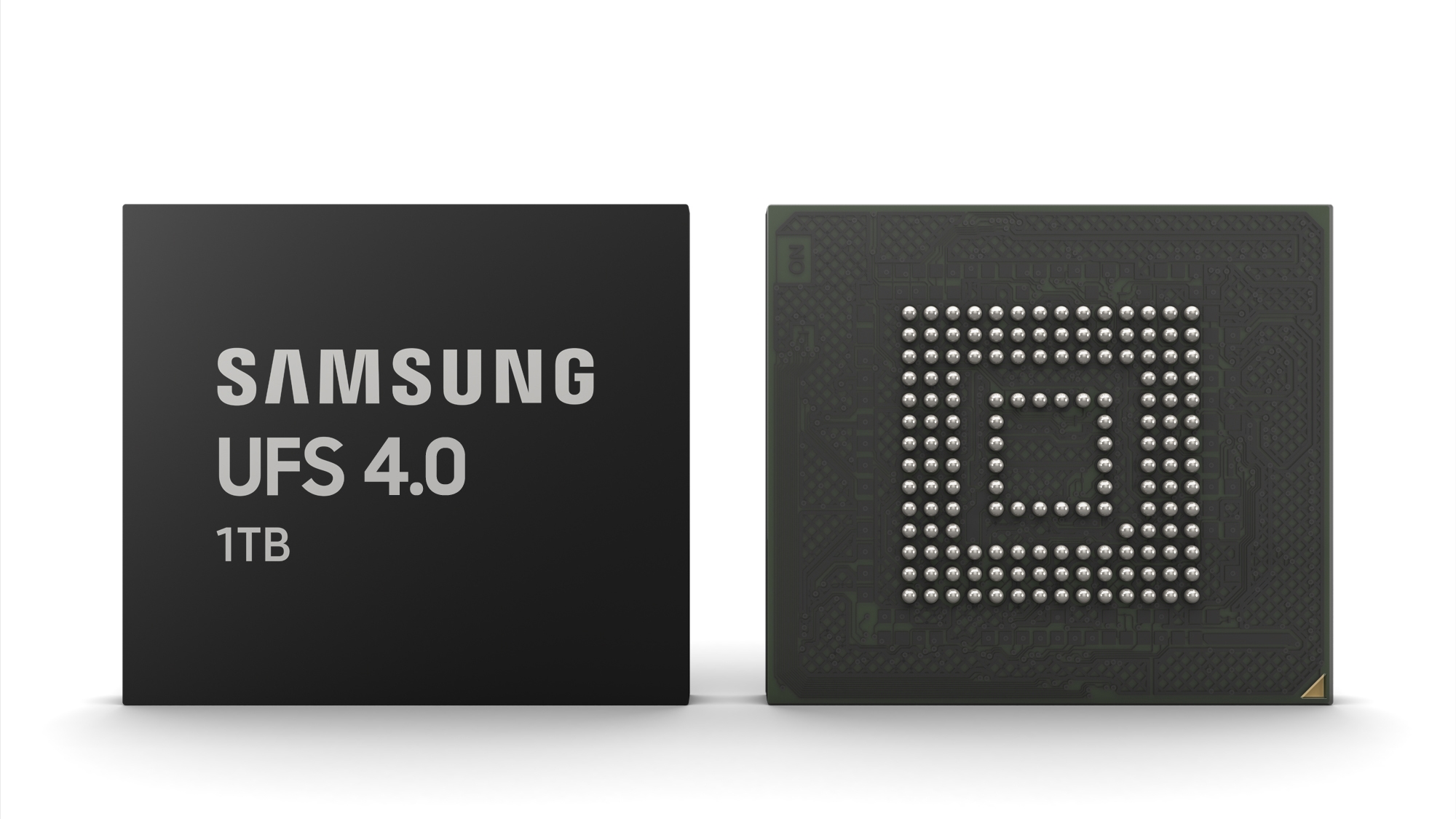Your next smartphone could be a whole lot faster - but not because of the CPU
New flash storage specification will give upcoming 5G smartphones a major performance boost

Samsung has revealed that it has developed the industry’s first Universal Flash Storage (UFS) 4.0 solution which promises to give the next generation of smartphones a major performance boost.
In a series of posts on Twitter, Samsung Semiconductor explained that UFS 4.0 is significantly faster than the previous generation (UFS 3.1). However, the new smartphone memory standard will eat up less of your device’s battery while also being more compact.
For those unfamiliar, Samsung is one of the industry’s top memory makers and its chips are even found in Apple’s iPhone. Although UFS 3.1 which debuted back in 2020 is already quite fast, UFS 4.0 will deliver up to twice the performance according to the Korean hardware giant.
UFS 4.0 can deliver speeds of up to 23.2Gbps per lane which is more than double that of UFS 3.1. As a result, UFS 4.0 is well suited for 5G smartphones as they can download even more data.

Could UFS 4.0 be a game changer?
When paired with Samsung’s 7th-gen V-NAND and a proprietary controller under the hood, UFS 4.0 will be able to deliver sequential read speeds of up to 4,200Mbps and sequential write speeds of up to 2,800Mbps.
At the same time, power efficiency has also been increased and UFS 4.0 is capable of offering a sequential read speed of 6.0Mbps per mA representing a 46 percent improvement over UFS 3.1. This means that smartphone owners will be able to get more battery life out of their devices even with a significant performance boost.
Samsung has also managed to shrink the size of UFS 4.0 compared to UFS 3.1. While a 512GB UFS 3.1 module measures 11.5 x 13 x 1.0mm, the maximum size of a UFS 4.0 module is 11 x 13 x 1mm. The company’s new smartphone memory will also come in a variety of capacities ranging all the way up to 1TB.
Sign up to the TechRadar Pro newsletter to get all the top news, opinion, features and guidance your business needs to succeed!
Mass production of UFS 4.0 memory is planned to begin in the third quarter of this year so it could potentially end up in flagship smartphones releasing around the holiday season.
After working with the TechRadar Pro team for the last several years, Anthony is now the security and networking editor at Tom’s Guide where he covers everything from data breaches and ransomware gangs to the best way to cover your whole home or business with Wi-Fi. When not writing, you can find him tinkering with PCs and game consoles, managing cables and upgrading his smart home.
